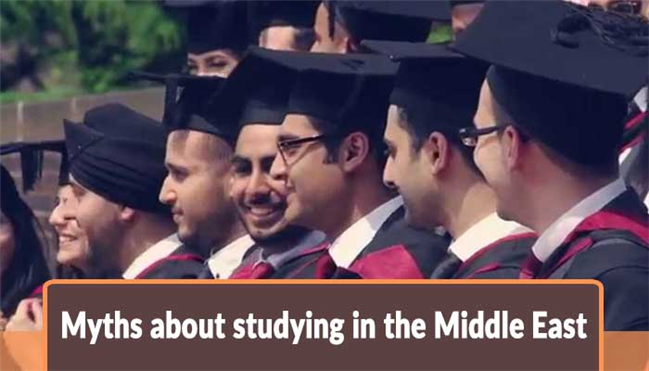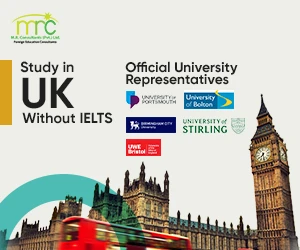
There are many myths about studying in the Middle East in the minds of students. This is more because there is little content available about life in Arab countries either on the internet or on television. Most Pakistani students are clueless about life in the Middle East.
-
Misconceptions about the Middle East:
-
It is dangerous:

The biggest myth about Middle East which makes students never even to explore this region, let alone go for studying there, is that it is a conflict area. The perception that the entire peninsula is mired in war and violence, is a narrow one. While it is true that there is conflict in many parts of the Middle Eastern countries, this does not mean that all areas are dangerous for students to go to. Seeing the whole of Middle East as a conflict zone because of unrest in some of its parts, is a little unjust. In fact, on a closer look you’ll find that certain educational hubs exist in many Middle Eastern countries which are up to par with international educational standards. What is more, many students who have studied in these countries claim that study life is peaceful and relaxing in Middle Eastern countries.
-
It is backward:
.jpg)
Another myth which keeps students from considering Middle Eastern countries as an educational destination is that these countries are not developed. Quite the contrary. Though development in many part of the world, including Middle Eastern countries, is not consistent, this does not mean that there are no metropolitan cities in these areas. Take Dubai for an example. It is a highly developed city which has been chosen by people from developed countries as their preferred city. On a similar note, places like Erbil in Iraq never fail to catch people by surprise who believe that such a cosmopolitan city can never exist in such a war-torn country as this.
-
It is too conservative:

Some students are put off by the idea that they will have to follow the norms of a truly conservative society. Many girls believe that they will have to wear head-scarves even when they don’t want to. This is not the case in all parts of Middle East. While it is true that girls and boys will have to dress modestly it does not mean that that it is mandatory for girls to wear the head scarf. In many Middle Eastern countries, people are free to cover or not cover their heads.
-
It lacks diversity:

A lot of students like to go to universities is U.S.A, Canada and Australia because of the diversity in these countries. They believe that since such countries have a higher population of immigrants, they will get a richer cultural experience. To that end, they strike out universities in the Middle Eastern countries. Thinking that the culture in the Middle East will be homogenous and that most of the people whom they will come across will be Arabs. This is not true because Middle East vary diverse in terms of people. Most of the people in the Middle East come from different corners of the world. Countries in this region are populated with people who belong to different ethnicities, cultures and religions. There is also a significant number of Pakistani diaspora living in the Middle East.
These myths restrict options to more popular study options. When in fact, studying in the Middle East can be both an eye-opening experience and a rewarding educational experience. Check out the universities section on the home page of studyabroad.pk.



.gif)


 1207
1207
 0
0
























